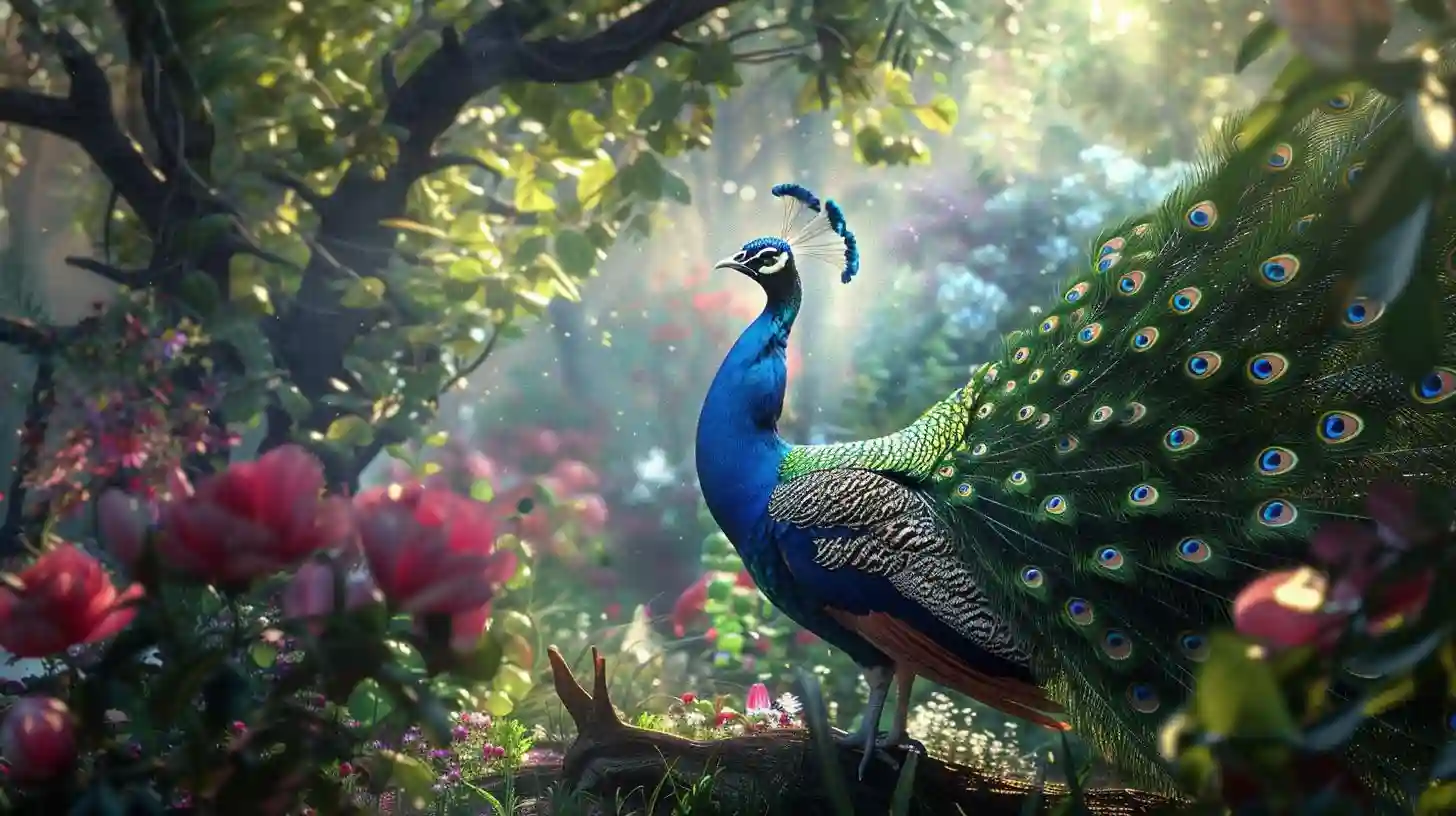
The peacock is a majestic bird that has long been admired for its beauty and grace. With its iridescent feathers and vibrant colors, the peacock is a symbol of elegance and splendor. In many cultures, the peacock is considered a symbol of immortality, renewal and spirituality.
Peacocks are native to Asia and Africa, where they can be found in a wide variety of habitats, including forests, grasslands and swamps. They are also known to inhabit gardens and parks, where they are often kept as ornamental birds. Peacocks are omnivorous birds, feeding on insects, plants and small animals.
One of the most distinctive features of the peacock is its extravagant plumage. The male peacock, known as the peacock, has a long, brightly colored tail that can reach six feet in length. This tail is covered in shimmering iridescent feathers arranged in a fan-like pattern. The male peacock displays his tail feathers in a spectacular dance known as the "train display" to attract a mate.
The female peacock, known as the peahen, is less showy than the male and does not have long, colorful tail feathers. However, it is still a stunning bird with iridescent green and blue plumage. The male peacock often courts the female by displaying his tail feathers in a dazzling array of colors.
Peacocks are also known for their distinctive calls, which can be heard from great distances. The male peacock often calls to attract a mate, producing a loud, high-pitched cry that is unmistakable. Peacocks are social birds and often form flocks with other peacocks to forage for food and protect themselves from predators.
In many cultures, the peacock is considered a symbol of beauty, prosperity and good luck. In Hindu mythology, the peacock is associated with the god of war, Kartikeya, who rides a peacock. In Greek and Roman mythology, the peacock is associated with the goddess Hera, who is often depicted with a peacock by her side.
Peacocks have also featured in art and literature throughout history. In medieval Europe, the peacock was often depicted as a symbol of immortality and resurrection, as its iridescent feathers were believed to never fade. In Chinese art, the peacock is a symbol of beauty and royalty, and is often depicted as a symbol of good luck and prosperity.
In modern times, the peacock continues to be a popular symbol in art, fashion and design. Its iridescent feathers have inspired many fashion designers who have incorporated the peacock's vibrant colors into their creations. The graceful shape and vibrant colors of the peacock are also reflected in many works of art, including paintings, sculptures and jewelry.
The peacock is a symbol of beauty, grace and elegance. With its stunning plumage and majestic appearance, the peacock is a bird that has captured the imagination of people around the world. Whether seen in the wild or in captivity, the peacock is a creature that always inspires awe and admiration. Its beauty and grace serve as a reminder of the wonders of the natural world and the importance of preserving and protecting the creatures that inhabit it.